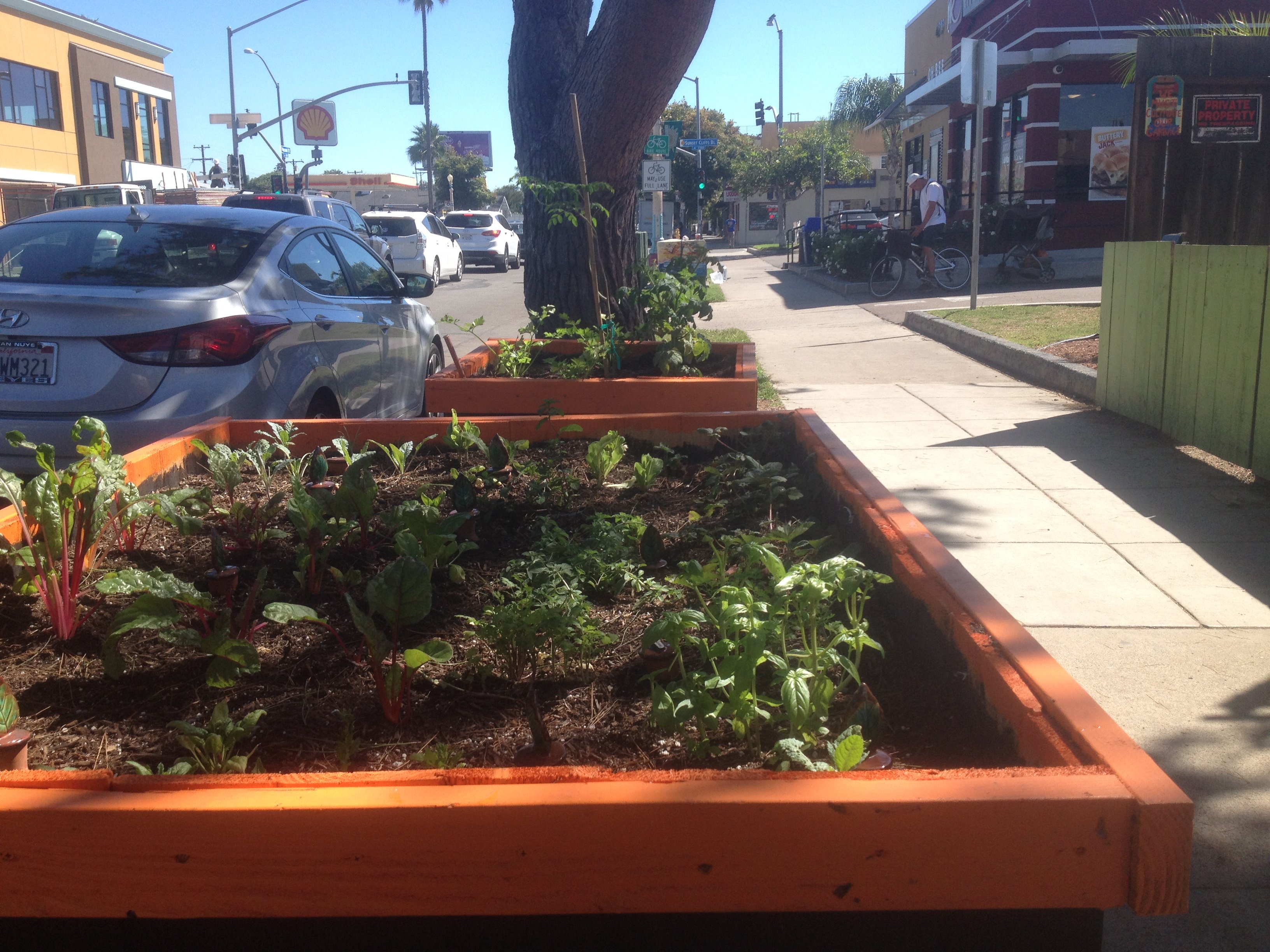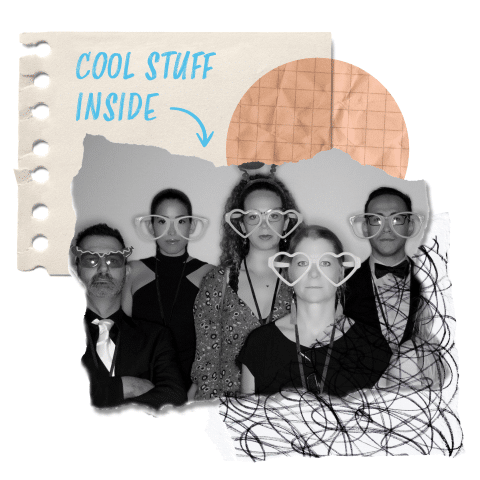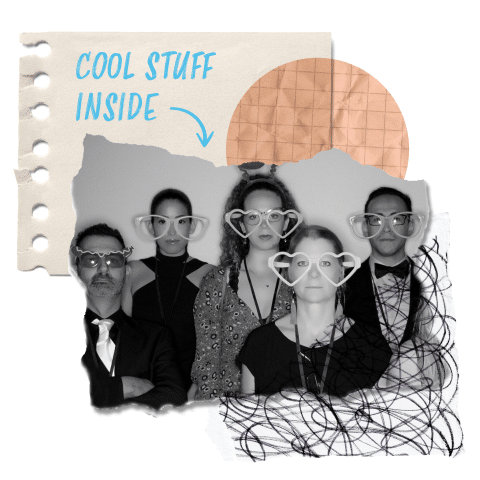It was just a regular staff meeting: new office policy, reminders, announcements and other Mixte-ish things. Then Jamie did something big. It made me want to run outside, grab a stranger by the head and yell in their face about what just happened.
She passed out a piece of paper that read,
To celebrate our three year anniversary and your contributions, I introduce you to the Mixte Adventure Challenge.
By August 2015 [three months later], I’d like for each of you to take one paid day of vacation and $300 to have your own Mixte Adventure. You can do anything you’d like. You can combine it with as many days of vacation or holiday days as you’d like. You can volunteer. You can travel. You can take a class. You can use the money in anyway you’d like. You simply have to choose your own adventure and write about it for our blog.
Thank you for everything you do for Mixte.
I wasn’t just excited about the money. I was going to start a revolution.
Let me explain.
Remember that scene in Willy Wonka and the Chocolate Factory, where they’re walking through a park made out of candy? Gene Wilder is singing about imagination while the kids and their parents run around stuffing their faces with gumdrop trees and marshmallow mushrooms. It’s pretty awesome, right? What if it were real? What if that park by your house was made out of free candy?
Unfortunately, candy doesn’t just sprout up from the ground. But real food does.
If you think about it, we’re not so far away from a Willy Wonka-esque free food paradise. Our cities are covered in living landscaping, we just need to swap out some of the bushes, flowers and grass for stuff that’s edible. Imagine your life as it is now: same house, same job, same city. Now switch all the regular bushes to blueberry bushes and all the palm trees to kumquat trees. Switch all the flowers to herbs and all the lawns to vegetables and make all of it free for everyone.
Imagine grabbing an orange and a few nuts for breakfast on your morning jog and walking around town collecting salad greens on your lunch break. You could snack on berries while you walk your dog, all for free. People would be healthier and feel more connected to their food. The air would smell sweeter. Sidewalks would be friendlier. We’d all have some extra cash in our pockets at the end of the week and maybe feel a bit healthier. It might even take a small chunk out of all the pollution made trucking our food from place to place. Perhaps most importantly, people might start to realize that when we set up our communities the right way, there’s more than enough for everyone to be happy and satisfied.
It always seemed like a great idea to me. So for the past four years or so, I’ve been trying to make free-food-covered-cities “a thing.”
I’ve been wildly unsuccessful.
Revolutions don’t tend to start on the weekend. They need a lot more oomph. Between bills and a job and a family that calls in a lot of favors and my below average time management skills, all I could ever gather was a spare two hours on a weekend or a one-off all-nighter. It wasn’t nearly enough time or effort for a full assault on modern landscape culture.
When I planted some secret carrots in public, landscapers thought they were weeds and ripped them up. When I planted Moringa tree saplings all over La Jolla, rabbits chewed them down at the trunk and dragged them all away within 36 hours. I even hooked up with an interstate anarchist network that agreed to help me plant strawberries and spinach in front of McDonald’s locations across California and Arizona. But they were more worried about property destruction and sticking it to the man than planting free food, and I had to pull the plug. I asked all the smart people I knew for help, they all let skepticism and red tape in the way of progress.
To make a brand new, scary idea become reality, you can’t just be bold on the weekend. You have to live your life breaking norms and changing rules. I wasn’t one of those people. I voted on party lines and didn’t hop fences unless I knew no one was watching.
Then Jamie came along. She founded Mixte to represent the opposite of the status quo. Her company isn’t about working 9-5 to make money and retire, it’s about helping nice companies do good things for our communities. It’s about having a job that doesn’t just pay the bills, but leaves a trail of sparkly free good deeds wherever it goes, just because the world needs them. Jamie bikes to work with such gusto all of her team started biking along with her. We have adventure days and dogs in our office and we’re part of the blue business council to support clean water across California. Mixte’s company picnics don’t use single-use plastics and our office has a free food garden out front.
Oh yeah, I almost forgot to mention that.
Our office now has a free food garden out front in the public space between the sidewalk and the street.
When Jamie gave us $300 and a day off, I told her I would use the money and time on the latest iteration of my public free food project. I didn’t mention that it probably wouldn’t work, just like the rest of them, but she knew. So without any questions, she dedicated the public space in front of the Mixte office for a free food garden. That gesture changed everything. It changed my life. It changed San Diego. My weird mission went from a trial and error treadmill into real life in a matter of seconds and now San Diego has its first free food garden and the world is on its way to becoming a better place.
Our free food garden is everything a free food garden should be. The planter box is a community chalkboard and features a vegetable super hero mural from volunteers at the art studio next door. The irrigation is drought-tolerant. The food is organically grown from heritage seed and some of the sapplings we’re raised by the U.S. veterans in sustainable agriculture career training. The compost was made from our own coffee grounds. We get to watch people of every age, background and language stop by, grab some kale or basil or a cherry tomato for free and enjoy a bite of fresh, free food and a brand new idea. It’s magical.
The garden also features several young moringa trees. They’re fast-growing, drought-tolerant trees that produce some of the most nutritious leaves in the world, year round. Our garden is helping inform a larger study of moringa’s viability in southern California at Coastal Roots Farm in Encinitas.
The project has also given birth to Eat OB, a volunteer group pooling resources to plant free food all over Ocean Beach, San Diego.
Lesson learned: be bold and be different and do nice things — for free. Or just join Mixte and the rest will grow naturally.







